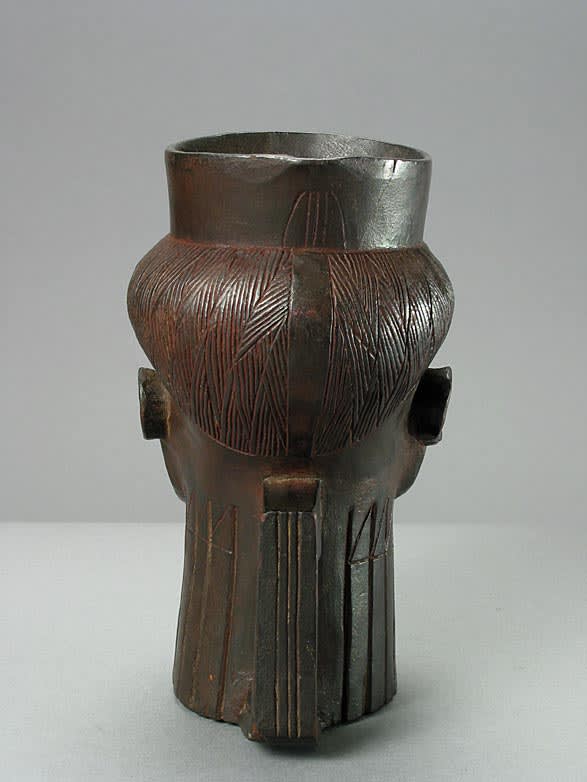Kuba Wooden Palm Wine Cup, 20th Century CE
Wood
height 16.5 cm
height 6 1/2 in
height 6 1/2 in
PF.6176
Further images
Palm wine, obtained from the raffia palm tree, is the most popular beverage consumed in the areas inhabited by the Kuba tribe. Today, plastic cups or glasses are used for...
Palm wine, obtained from the raffia palm tree, is the most popular beverage consumed in the areas inhabited by the Kuba tribe. Today, plastic cups or glasses are used for drinking it; however, during the 19th and early 20th centuries, decorated wooden cups were carved by several tribes across the Southern Savanna. The Kuba are specifically known for their figural and cephalomorphic (head-shaped) cups. This vessel is a perfect example of the masterful artistry of the Kuba woodcarvers. The head is emphasized above all else; the neck and handle are much of an afterthought. The facial features are finely polished, specifically the arching brows, almond-shaped eyes, and pursed lips. Fantastic decorative keloid scarifications can be seen in the diamond-shaped marks along his neck and cheeks and the series of vertical lines along the back of his neck. Such scars were considered both marks of beauty as well as signs of rank and prestige. Clearly this man, with such intricately rendered scarification, was a member of the wealthy elite. The well-defined hairline is a typical Kuba coiffure: the hair was pulled back and the hairline was shaved arching across the top of the forehead except for two points at the temples. A cup such as this was certainly originally carved as a prestigious display piece for titled individuals of the Kuba tribe. Surely the vessel’s inherent beauty and functional durability rival or surpass that of any fine crystal stemware or bejeweled chalice.







